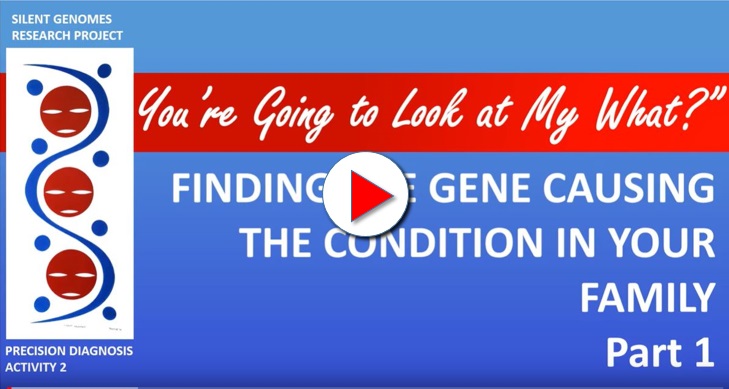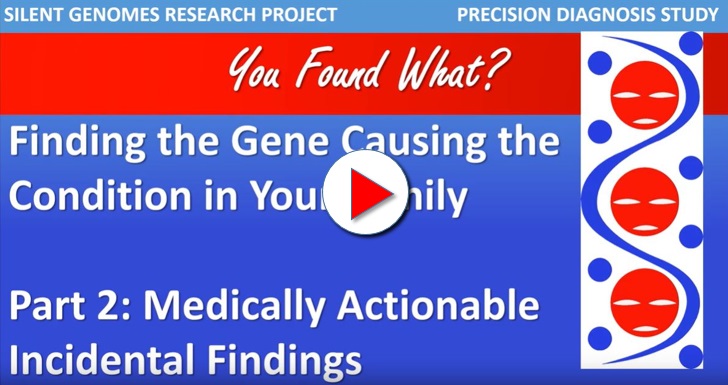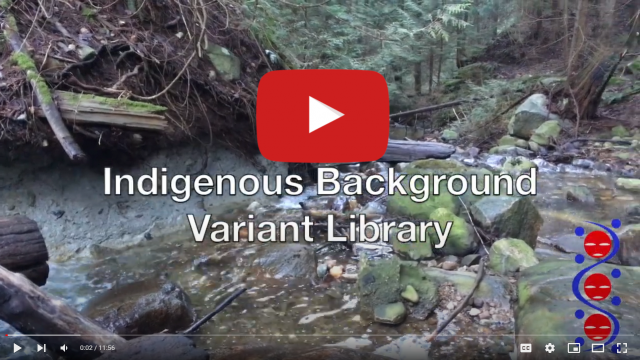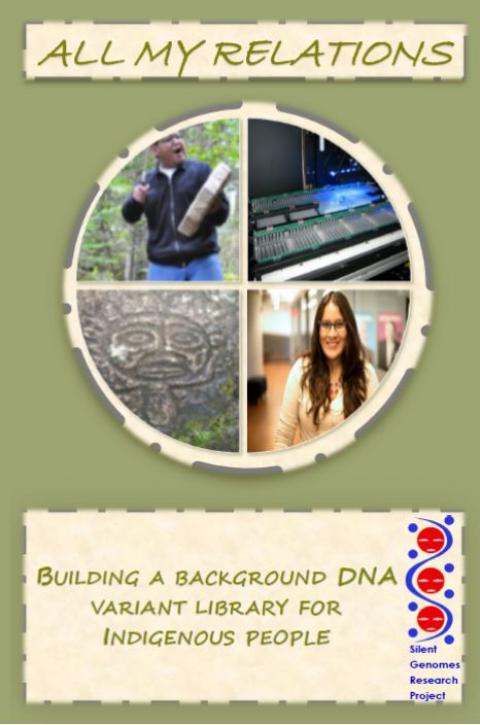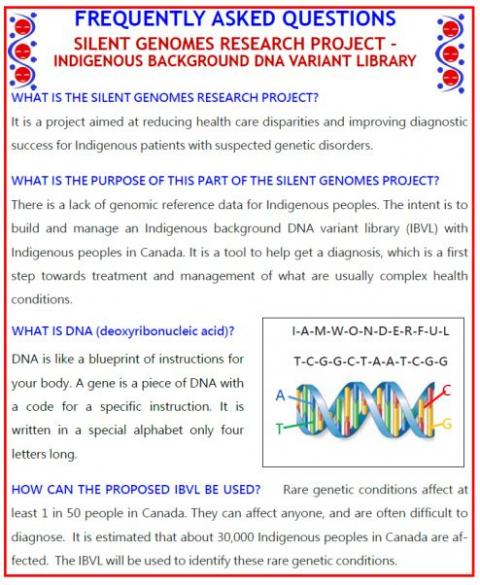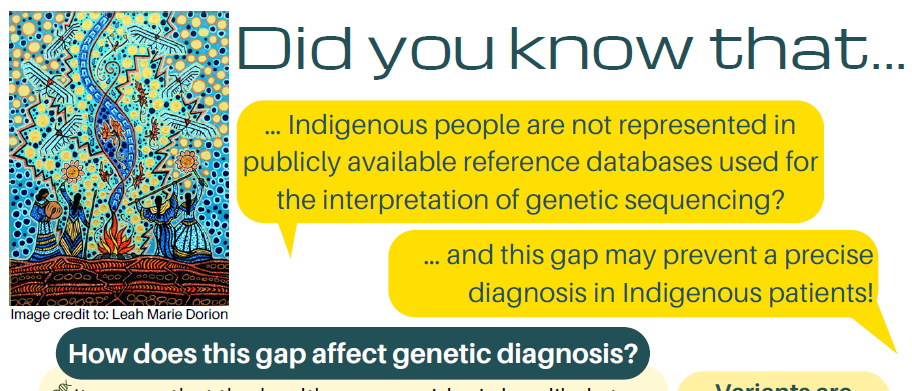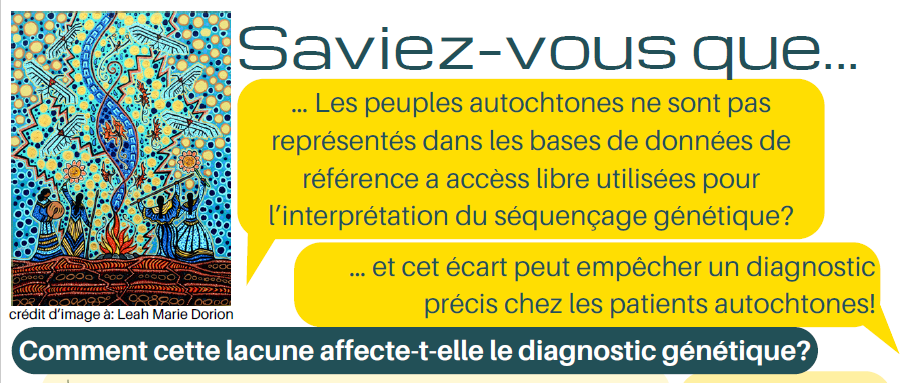"We call upon the federal government to develop with Aboriginal groups a joint strategy to eliminate educational and employment gaps between Aboriginal and non-Aboriginal Canadians."
Truth and Reconciliation Commission of Canada: Legacy. Education. Calls to action (7)
For everyone
The genome and the gene … and everything in between
This educational series on genetics is a resource and educational tool for Indigenous communities, families, and participants to gain a baseline understanding of genetics. This information may contribute to a better understanding of genetic components that will be integrated in all of the Silent Genomes activities.
Topics: Cells, DNA (Nucleotides, base pairs, structure, and chromosomes), Genome (Genes and Proteins), and Variants
Length: 12:18
For study participants (Activity 2)
Finding the gene causing the condition in your family, Part 1
Finding the gene causing the condition in your family, Part 2.
Medically Actionable Incidental Findings
The following presentations provide an overview of two key aspects: a story about how researchers are going to look for answers; and what you can expect to learn from their findings. More detailed information can be found here.
Topics: Genome, Genes, Gene variants, Disease-Causing Variants, Non-Disease-Causing Variants, Variants of Uncertain Significance, Medically Actionable Incidental Findings.
Length: 7:17, 4:30
IBVL Educational materials
What is an Indigenous Background Variant Library (IBVL) and how could it help address health inequities across Canada and beyond?
Video | 11:56
-
comment activer les sous-titres en français
-
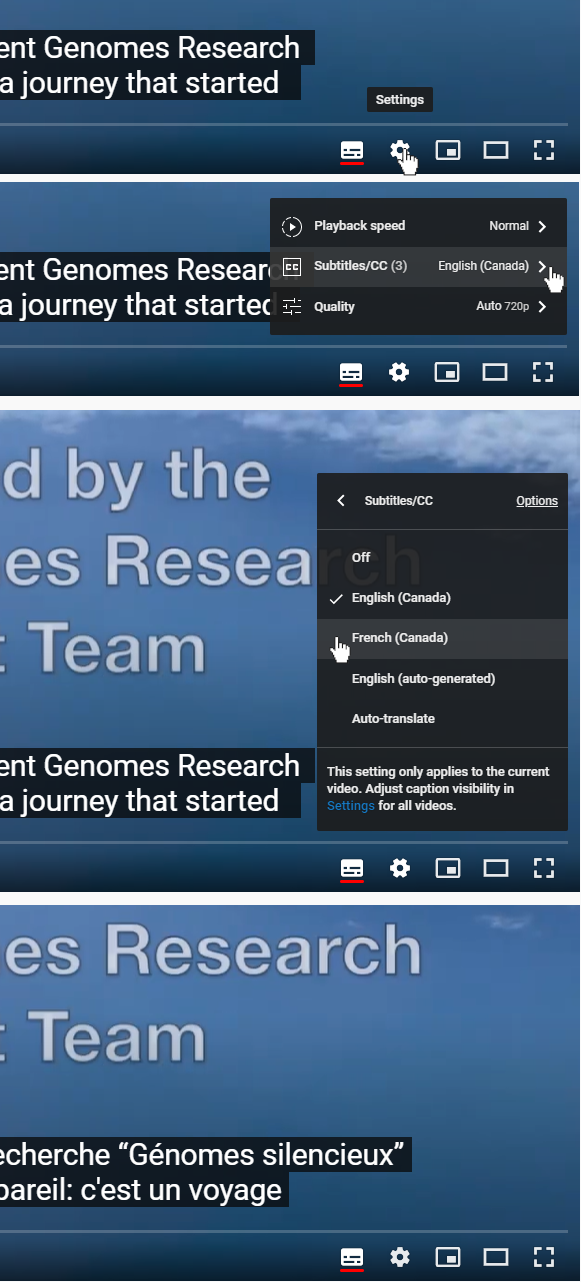
The Silent Genomes Project team is partnering with Indigenous communities and advisors across Canada to build an IBVL, with the goal of reducing inequities in medical genetics healthcare. The Silent Genomes Indigenous Rare Disease Diagnosis Steering Committee (S-GIRDD) is essential to the project, providing wise counsel to guide cultural safety and ensure that Indigenous voices are heard throughout the development of the IBVL. We invite you along this journey to learn more about what an IBVL is, why it’s needed, and how this clinical tool could help improve diagnostic success for Indigenous patients with rare genetic diseases, now and in future generations.
Frequently Asked Questions (Booklet)
For healthcare providers
Title: The Silent Genomes Project: The pursuit of equity in genomics healthcare for Indigenous Peoples in Canada
(Length: 50 min)
*Trigger warning: This webinar includes a discussion of anti-Indigenous racism within the healthcare system and the harmful history of research done on Indigenous Peoples, which may be triggering for some.
Presented by Silent Genomes Project team members Brittany Morgan (Community Engagement Coordinator) and Sarah McIntosh (Genetic Counsellor) for the Canadian Association of Genetic Counsellors ‘Current Issues’ Webinar Series, September 9, 2021.
The target audience was genetic counsellors, but the content is applicable to a wide audience wishing to learn more about the Silent Genomes Project.
Objectives:
- Examine the genomic health divide that exists between Indigenous and non-Indigenous Peoples in Canada.
- Discuss barriers that continue to hinder access to genomic testing and diagnosis for Indigenous Peoples across Canada with genetic conditions.
- Summarize the overall goal of the Silent Genomes Project, and how the four project activities are working together to achieve this goal.
- Explore how the Precision Diagnosis Study (Activity 2 of the Silent Genomes Project) is working towards culturally safe genetic counselling.
- Discuss the Indigenous partnerships and roles of Indigenous advisors in the Silent Genomes Project.
Topics: Genomic health divide, Barriers to genomic testing and diagnosis, Precision Diagnosis, Silent Genomes project
Length: 50:54
IBVL booklet for the healthcare providers
English
French
